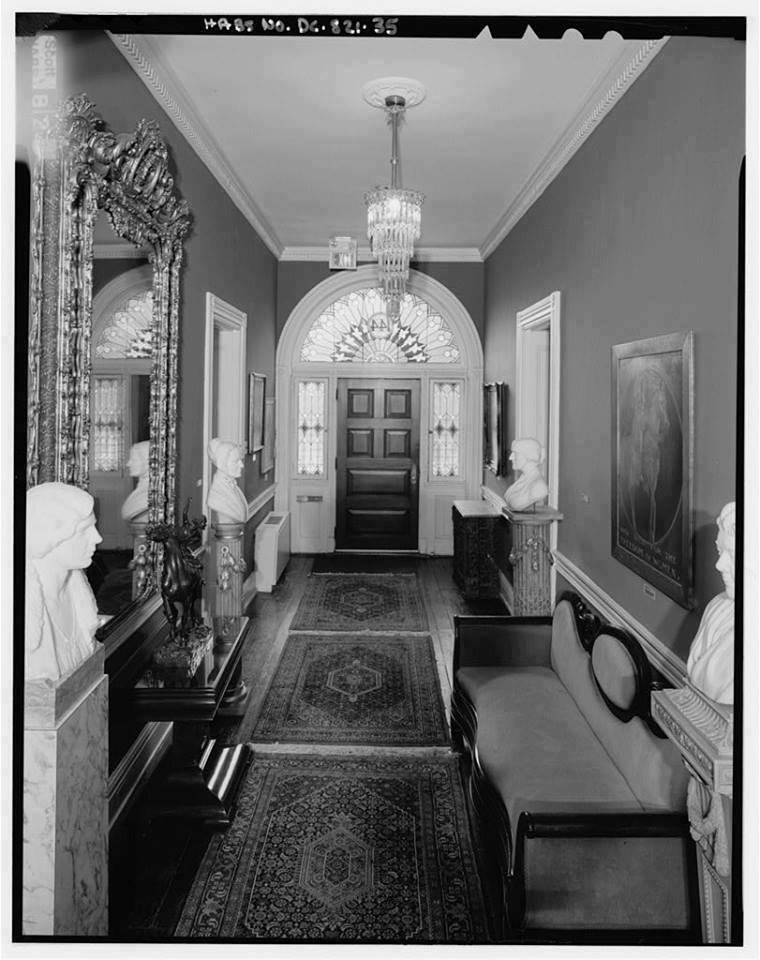
Today in Feminist History is our daily recap of the major milestones and minor advancements that shaped women’s history in the U.S.—from suffrage to Shirley Chisholm and beyond. These posts were written by, and are presented in homage to, our late staff historian and archivist, David Dismore.
September 26, 1968: An amazing victory for the National Woman’s Party today, in a struggle which caused some of the country’s youngest feminists to unite with suffragists who had fought for the vote half a century ago.

Their common purpose was to save the N.W.P.’s headquarters and the property immediately surrounding it. A bill had been introduced in Congress to take 2/3 of the N.W.P.’s land for a driveway to serve a proposed New Senate Office Building extension. Having been passed by the Senate, the bill was just a quick House vote and a Presidential signature away from enactment.
The National Woman’s Party, whose members picketed President Wilson at the White House from 1917 to 1919, enduring extremes of weather, attacks by angry mobs, arrests, jail sentences, hunger strikes and force-feedings in a successful campaign to pressure the President into becoming an advocate of the Susan B. Anthony (now the 19th) Amendment, wasn’t about to be intimidated by any of today’s politicians. So, when the confiscation of most of the party’s land – and even structures attached to the main house – became a real threat, N.W.P. members vowed that if it became necessary, they would be just as militant in 1968 as they had been in 1918. New feminist groups, such as the National Organization for Women and other Women’s Liberation organizations then offered to help. Barbara Ireton, president of the local N.O.W. chapter, promised a ring of women around the building to protect it if a bill to take any of the N.W.P.’s property passed.
A preliminary victory was won a week ago when House Majority Whip Hale Boggs, Democrat of Louisiana, informed Alice Paul, the N.W.P.’s founder and Honorary Chair, that the vote would be postponed. At the same time, Patricia McDonald, accompanied by 15 college students and recent graduates, arrived in town, and began personally lobbying the House members about the historic status of Sewall-Belmont House. According to McDonald: “No hearings have ever been held, in either House or Senate, so we knew the members of Congress didn’t know anything about the house and its history.”
Robert Sewall completed construction on the original house in 1800, then rented it to Secretary of the Treasury Albert Gallatin from 1801 to 1813. In August, 1814, the house was burned by invading British troops because it was used by patriots resisting their advance on Washington. Sewall rebuilt the house after the war, and it remained in his family for over a century, until purchased by Senator Porter Dale, Republican of Vermont, in 1922. He sold it to Alva Belmont in 1929, so that she could donate it to the National Woman’s Party as its new headquarters.
Today, complete and final victory was achieved when the House voted to kill the bill. Alice Paul said: “It is indeed a relief. It is almost unheard of for the House to vote against the Senate on a measure that affects the internal problems of the other house. A very unusual procedure.”
But Sewall-Belmont House is also very unusual. It has been the headquarters – and officers’ living quarters – of the National Woman’s Party since it was donated to the N.W.P. by Alva Belmont in 1929. Now the entire property, which contains one of the oldest houses on Capitol Hill, will remain in the N.W.P.’s hands. So the party’s efforts can once again be concentrated on getting Congress to approve, then 38 States to ratify, the Equal Rights Amendment, written by Alice Paul and introduced into Congress in 1923!





